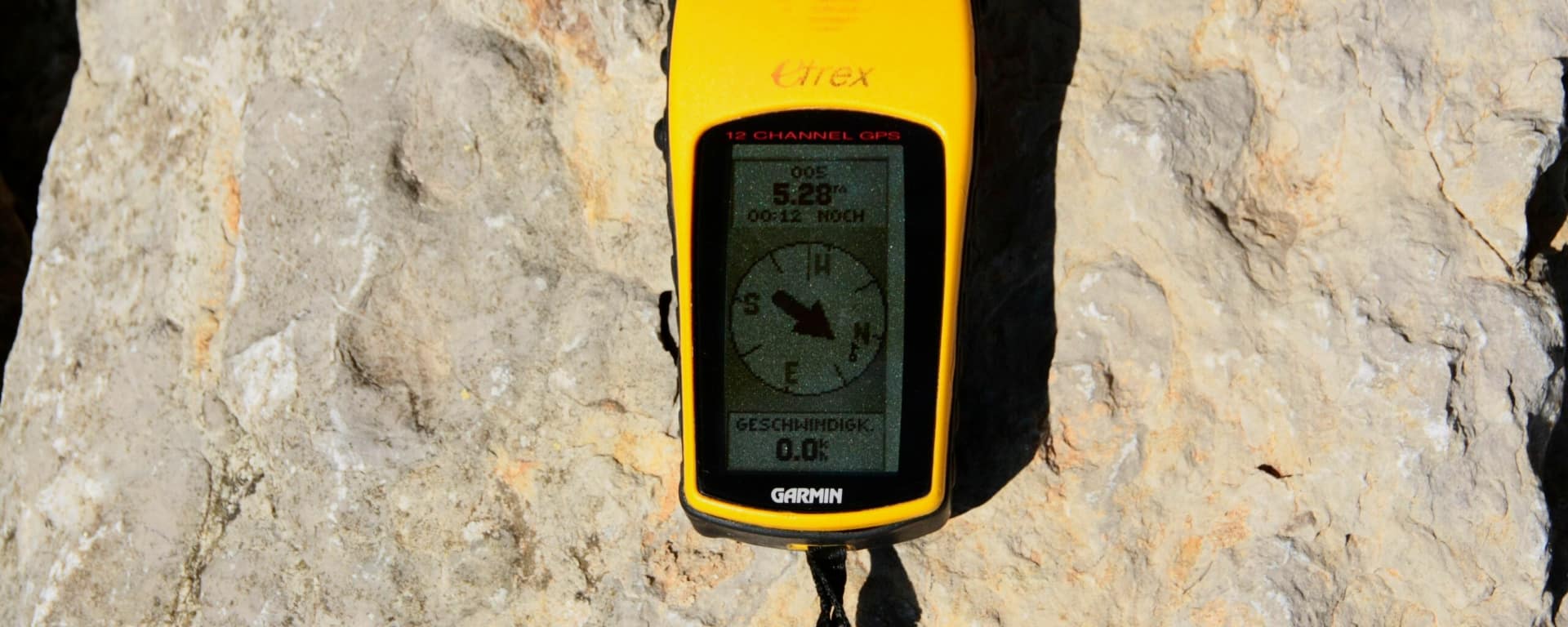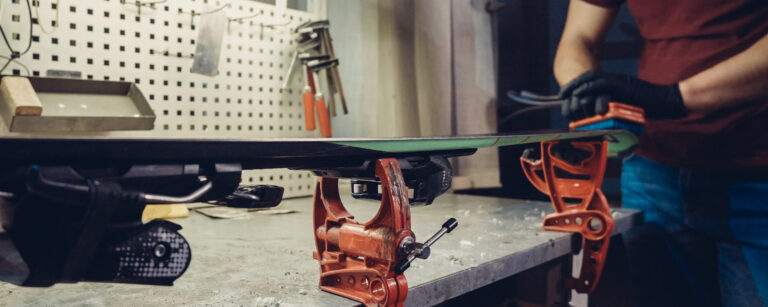5 Best Handheld GPS 2022 (Ranked & Reviewed)
Whether you’re hiking, camping, or climbing, knowing where you are and where you’re trying to get to is critical outdoors. A hiking GPS can be a lifesaver.
Hiking GPS units have improved dramatically since their inception with various features, price points, and sizes for everyone from novices to experts. Our list of the Best Handheld GPS will help you find the perfect GPS for your needs.
You’ll want to consider key features when choosing the best handheld GPS, like the number of satellite systems they can access, battery life, and how you plan to use it. Basic units are brilliant as emergency tools but can be awful to use for navigation. We’ve reviewed and ranked the best models on the market, so you can make an informed decision before you buy.
Without further ado, let’s get started!
What Is The Best Handheld GPS?
Here is our ranked and reviewed list of the best handheld GPS.
The 5 Best Handheld GPS
- Best Overall Handheld GPS – Garmin GPSMAP 66i
- Best Budget Handheld GPS – Garmin eTrex 32x
- Best Minimalist Handheld GPS – Garmin inReach Mini 2
- Best Touchscreen Handheld GPS – Garmin Montana 700i
- Best Wrist Watch GPS – Garmin Fenix 7 Pro Solar Edition
1) Best Overall Handheld GPS – Garmin GPSMAP 66i
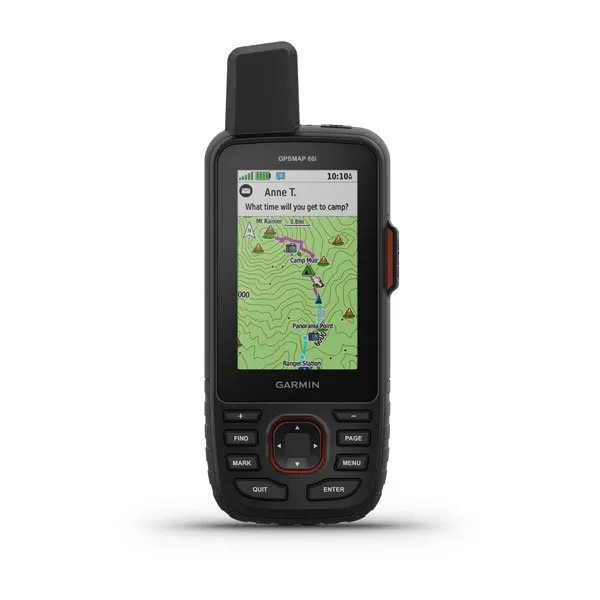
Overview
The Garmin GPSMAP 66i is our best overall handheld GPS because it offers precise navigation, global communication, and top-of-the-line mapping all in one device. This rugged GPS also has a long battery life, making it perfect for extended adventures.
The 66i’s hardware is among the best-in-class, with a 3-inch high-resolution screen, excellent battery life (200 hours in power save mode), 16 GB of memory, and WiFi capability. It includes an external antenna, ABC sensors, multi-GNSS compatibility (GPS and Galileo), and TopoActive mapping and birdseye satellite imagery.
With the GPSMAP 66i, not only do you get Garmin’s premium navigation tools, but you also get satellite messaging and SOS via inReach. Adventurers heading to remote locals without cell service can now send and receive messages, access weather forecasts, and initiate rescue, which is definitely worth the extra cost, in our opinion.
Specs
- Weight: 8.1 oz
- Display: 3″ color TFT
- Battery Life: 35 hrs
- Memory: 16GB
Recommendation
The Garmin GPSMAP 66i is the best overall handheld GPS because it offers precise navigation, global communication, and top-of-the-line mapping all in one device. Explorers looking for a rugged, reliable handheld GPS with a long battery life will love the 66i.
Price
MSRP $599.99
2) Best Budget Handheld GPS – Garmin eTrex 32x
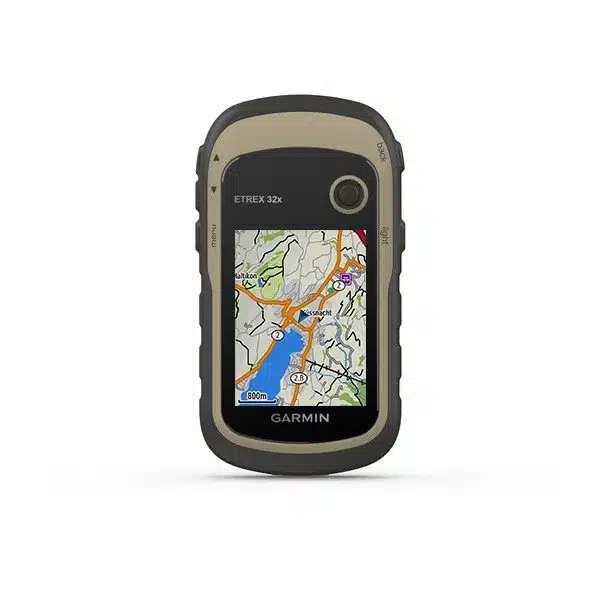
Overview
The eTrex 32x is a budget-friendly handheld GPS that offers enhanced features. The Garmin eTrex 32x is user-friendly and features 8 GB of internal memory, 25 hours of battery life, and rugged, waterproof construction.
With GPS and GLONASS satellite systems, the eTrex 32x can track in more challenging environments than GPS alone. The added 3-axis compass and barometric altimeter make it easy for you to keep your bearings. The device is pre-loaded with TopoActive maps and support for paperless geocaching.
Specs
- Weight: 5 oz
- Display: 2.2″ color TFT
- Battery Life: 25 hrs
- Memory: 8GB
Recommendation
The Garmin eTrex 32x is a great handheld GPS for budget-conscious buyers. The enhanced features, rugged construction, and long battery life make it a good choice for those who want a reliable GPS device without all the bells and whistles.
Price
MSRP $299.99
3) Best Minimalist Handheld GPS – Garmin inReach Mini 2
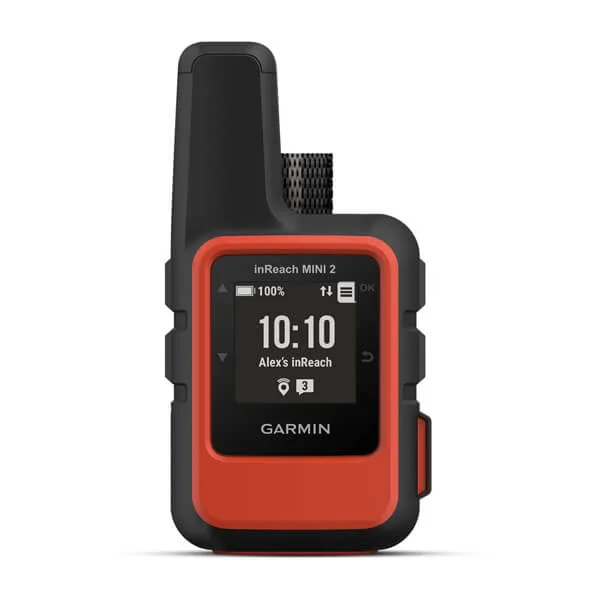
Overview
The Garmin inReach Mini 2 offers mapping features, the best minimalist handheld GPS for outdoor adventurers, satellite messaging, and more. Its small form factor and light weight make it perfect for backpacking, and its long battery life means you can adventure longer and further.
The Garmin inReach Mini 2 is primarily a communication device for satellite messaging and SOS but can also provide weather reports, navigation, and mapping. It can store up to 1,000 waypoints but does require a smartphone and companion app to sync points and routes.
You will need a subscription that costs anywhere from $10 – $70 per month to use the communication features. For hikers who use their phones to navigate, the added safety of remote communication is well worth the added cost.
Specs
- Weight: 3.5 oz
- Display: 1.28″ Monochrome MIP
- Battery Life: 14 days
- Memory: 1,000 waypoints
Recommendation
The Garmin inReach Mini 2 is the best handheld GPS for minimalist hikers and outdoor adventurers. Its small form factor and lightweight won’t weigh you down on long hikes, and satellite communication features provide peace of mind in remote areas.
Price
MSRP $399.99
4) Best Touchscreen Handheld GPS – Garmin Montana 700i
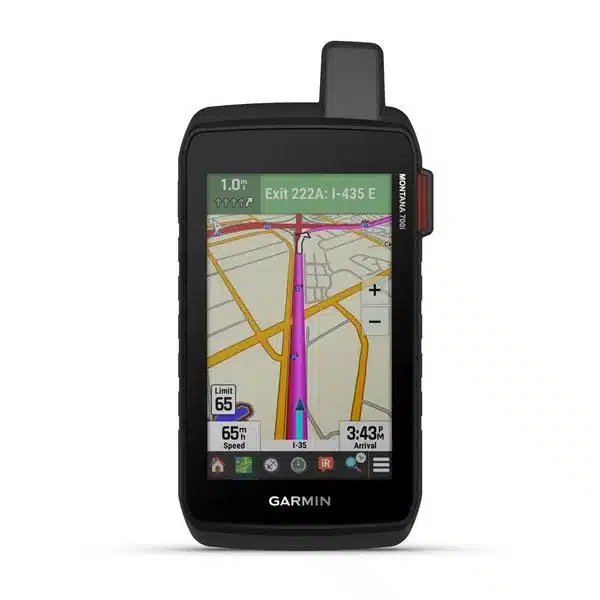
Overview
If you want the best touchscreen handheld GPS, then the Garmin Montana 700i is your device. This sophisticated hiking GPS device from the iconic brand is slightly bigger and heavier than other devices on this list. Still, it also has a more prominent display with better resolution. The touchscreen display supports double orientation and is more “glove-friendly” than a standard touchscreen display.
The Garmin Montana 700i features a barometric altimeter, digital compass, sun and moon information, hunting/fishing calendar, tide tables, and turn-by-turn navigation. The device tracks GPS and Galileo satellites, meaning it quickly retrieves signals and gives exact locations. Garmin Montana 700i is powered by a rechargeable lithium-ion battery with a battery life of approximately 18 hours.
The Garmin Montana 700i is a powerful navigation tool but has two downsides – its weight and size. But, if you can look past these, this is the best touchscreen handheld GPS.
Specs
- Weight: 14,5 oz
- Display: 5″ color WVGA
- Battery Life: 18 hrs
- Memory: 16GB
Recommendation
The Garmin Montana 700i is the best touchscreen handheld GPS for those who don’t mind its size and weight. It has a large, high-resolution display packed with features, making it an excellent choice for serious hikers and backpackers.
Price
MSRP $699.99
5) Best Wrist Watch GPS – Garmin Fenix 7x Saphire Solar Edition
Overview
The best wristwatch GPS is the Garmin Fenix 7 Pro Solar Edition. It has a great battery life, a built-in altimeter, barometer, compass, and maps. With the Fenix 7x, you get much more than just a GPS handheld tracker. This full-featured watch not only tracks your activities but connects with your phone as well. Like other smartwatches, it receives notifications from your phone, makes contactless payments, stores music offline, and has customizable watch faces.
The Garmin Connect IQ App allows you to control all aspects of the watch and track and record your activities. You can also share your activities with others and see how you rank on the leaderboard.
With the Fenix 7x, you are getting one of the best smartwatches on the market with excellent GPS tracking capabilities.
Specs
- Weight: 3.1 oz
- Display: 1.4″ color MIP
- Battery Life: 28 days
- Memory: 32GB
Recommendation
The Garmin Fenix 7x is the best wristwatch GPS for those who want a full-featured smartwatch with excellent GPS tracking capabilities. It is perfect for athletes and outdoor enthusiasts who want to track their activities and stay connected while on the go.
If you are looking for a watch that does it all, the Fenix 7x is the best choice. It has a great battery life, a bright color display, and is packed with features that will keep you connected and motivated to
Price
MSRP $999.99
Handheld GPS Buying Guide
Choosing the right handheld GPS can be a daunting task. With so many options on the market, it’s hard to know which one is best for your needs. Here are some things to consider before buying a handheld GPS.
What type of activities will you use it for?
The first thing to consider is what type of activities you’ll use the handheld GPS for. If you’re an avid hiker, you’ll want a GPS with topographic maps that can track your location in real-time. If you’re a hunter or fisherman, you’ll want a GPS with pre-loaded hunting and fishing area maps.
What features do you need?
Once you know what type of activities you’ll use the handheld GPS for, you can narrow your choices by looking for devices with the needed features. Some features to consider include:
Touchscreen vs. Buttons
Do you want a touchscreen or button-operated GPS? Touchscreen models
are generally more user-friendly, but button models may be better for those wearing gloves or using the GPS in cold weather. A touch screen offers easy and intuitive control but may be harder to operate when wearing gloves.
Display: Screen Size and Readability
Screen size and resolution are essential considerations when choosing a handheld GPS device. A larger screen will be easier to read but may also be harder to carry, and a high-resolution screen will be easier to read but may drain the battery faster. If weight and portability are important to you, choose a GPS with a smaller screen. If readability is your main concern, choose a GPS with a higher-resolution screen.
Global Navigation Satellite Systems (GNSS)
The global navigation satellite system (GNSS) is the technology that powers the best handheld GPS devices. The two most common systems are the United States Global Positioning System (GPS) and Russia’s GLONASS. However, there are also regional systems, like Europe’s Galileo and China’s BeiDou. If you plan to use your GPS in Europe or Asia, you’ll want a device that uses Galileo or BeiDou. Many GPS units can access more than one system, which can be helpful if you travel internationally.
Storage and Maps
Most handheld GPS devices come with built-in storage for maps. However, the amount of storage will vary from device to device. If you plan to download maps or store other data, like waypoints or tracks, on your GPS, you’ll want a device with more storage. Some devices allow you to expand the storage capacity by adding a memory card.
Satellite Messaging and SOS
Some handheld GPS devices come with satellite messaging capabilities, allowing you to send and receive text messages or emails in areas without cell phone coverage. Satellite messaging can be a lifesaver if you’re stranded in a remote area. Some devices also have an SOS feature that can send your location to emergency services in case of an accident or injury.
Battery Life
Battery life is an important consideration when choosing a the best handheld GPS devices. If you’re planning to use the GPS for long hikes or other extended activities, you’ll want a device with long battery life. Many devices use AA or AAA batteries, which can be replaced on the trail if necessary. Some devices come with rechargeable batteries, but these need to be recharged using an outlet, making them harder to recharge on the trail.
Altimeter, Barometer, and Compass (ABC)
Some of the best handheld GPS devices come with an altimeter, barometer, and compass (ABC). These features can be helpful if you’re planning to do any off-trail hiking. The altimeter can be used to estimate your elevation, the barometer can be used to predict weather changes, and the compass can help you find your way if you get lost.
Smartphone GPS vs. A Handheld GPS
A few critical differences exist between a smartphone and handheld GPS devices:
- A smartphone is typically less accurate than a handheld GPS device. This is because smartphones use a combination of cell tower triangulation, WiFi hotspots, and satellite data to determine your location. Handheld GPS devices use satellite data exclusively, which makes them more accurate.
- Smartphone GPS units typically have shorter battery life than handheld GPS devices. This is because smartphones have more features and use more power than a dedicated GPS unit.
- Smartphone GPS units can be more challenging to use in remote areas because they require cell phone coverage.
GPS Watches
GPS watches can be a great alternative to a handheld GPS. They typically have all the same features as a handheld GPS device but are much smaller and lighter. This makes them more portable and easier to carry. GPS watches usually have better battery life than a smartphone GPS. The downside of GPS watches is that they can be more challenging to use because of their small size. The display is smaller, and the buttons are often close together, making it difficult to operate the watch while hiking.
FAQ
Is a handheld GPS worth getting?
A handheld GPS device is worth getting if you need a more reliable way to track your location than your phone. Handheld GPS devices are more accurate than phone GPS and have other features like maps, altimeters, and compasses that can be useful outdoors.
What handheld GPS does the military use?
The AN/PSN-13 Defense Advanced GPS Receiver (DAGR; commonly known as “dagger”) is a handheld GPS device used by the United States Department of Defense and select foreign military services. It’s a dual-frequency, military-grade receiver with the necessary security features to decrypt P(Y)-code encrypted GPS transmissions. (Source: Wikipedia)
What is the easiest handheld GPS to use?
The easiest handheld GPS device to use is the Garmin eTrex 32x. It has an intuitive interface and simple buttons that make it easy to input data and navigate the menus. The eTrex 32x also has a large screen that makes it easy to see your location and track your progress.
Final Thoughts
A handheld GPS can be a valuable tool for hikers and outdoor enthusiasts. It can provide peace of mind if you get lost and can be used to track your progress and route. When choosing a the best handheld GPS, consider the features that are important to you and the activities you’ll be using it for. Battery life, accuracy, and ease of use are all essential factors. With so many options on the market, a handheld GPS is sure to be perfect for you.
See you on the trail!

